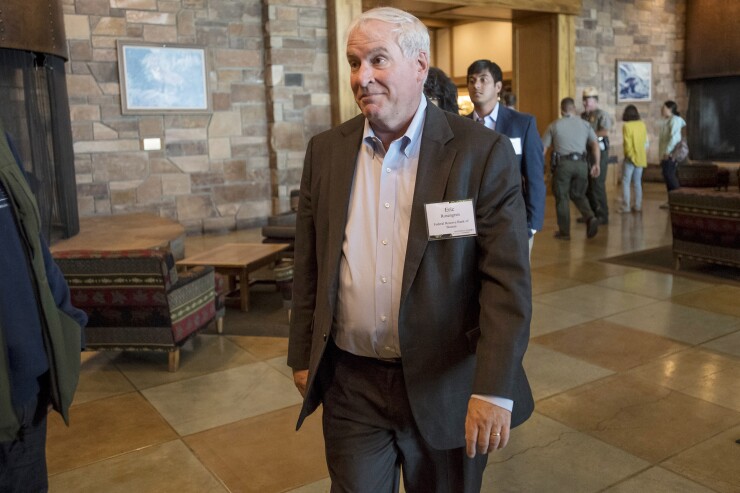Recession fears, which persisted earlier this year, have subsided and Federal Reserve Bank of Boston President Eric Rosengren doesn't expect a downturn unless a major shock occurs.
A negative yield curve was the main driver of recession expectations, with “financial market practitioners” more likely to believe a downturn was imminent than private forecasters, who expected the economy to keep growing, he said. But this time may have been different because policy was accommodative, and a negative yield curve is associated with tightening policy, he said.
“My own view is that it is unlikely we will have an economic downturn in the coming year, given the generally positive financial conditions and the continued accommodative monetary and fiscal policies,” Rosengren told the Forecasters Club of New York, according to prepared text released by the Fed. “Of course, this outlook assumes that we do not have a significant negative shock from abroad, or experience a negative shock from a sharp ratcheting up of trade disputes with major trading partners.”

Since policy is accommodative, in the short term, “I see no need to make the current stance of monetary policy more accommodative,” he said. Since monetary policy works with a lag, and the Fed cut rates three times this year, “it is appropriate to take a patient approach to considering any policy changes, unless there is a material change to the outlook.”
Rosengren said the economy is "currently in a good place,” based on the low unemployment rate (3.5% in November). He expects unemployment to “fluctuate narrowly around its current value," inflation, measured by personal consumption expenditures, to hover around 2%, and housing to stage a rebound with low interest rates.
"Plentiful jobs and growth in income have provided improvements in confidence and bode well for holiday sales and beyond,” he said.
On the negative side, he said, manufacturing has been weak, which he said “is not surprising,” since tariffs, imposed on China, have hurt traded goods.
Separately, Federal Reserve Bank of New York released a report stating the tri-state region economy has softened, as “a variety of headwinds, including labor shortages and uncertainty related to trade,” have taken a toll on the region.
Data
Housing starts rose to 1.365 million units on a seasonally adjusted annual rate, from an upwardly revised 1.323 million in October, first reported as 1.314 million, the Commerce Department reported Tuesday.
Building permits climbed to 1.482 million units, its highest read since May 2007, from 1.461 million in October.
IFR Markets predicted 1.344 million starts and 1.400 million permits.
The growth in permits suggests an uptick in building in 2020.
Separately, industrial production rose 1.1% in November after declining 0.9% in October, the Federal Reserve reported. The numbers reflect a GM worker strike which cut production in October.
Capacity utilization was at 77.3% in November, up from 76.6% in October.
Economists expected production to rise 0.8% and capacity use of 77.2%.
Also, the New York Fed released its Business Leaders Survey, which showed growth in the region’s service sector in December. The business activity index crept to 3.0 from 2.9, while the business climate index narrowed to negative 4.5 from negative 10.5, suggesting respondents see the climate as worse than usual. Optimism was better, with the future business activity index rising to 18.0 from 12.9 and the future business climate improving to negative 6.5 from negative 14.0.





